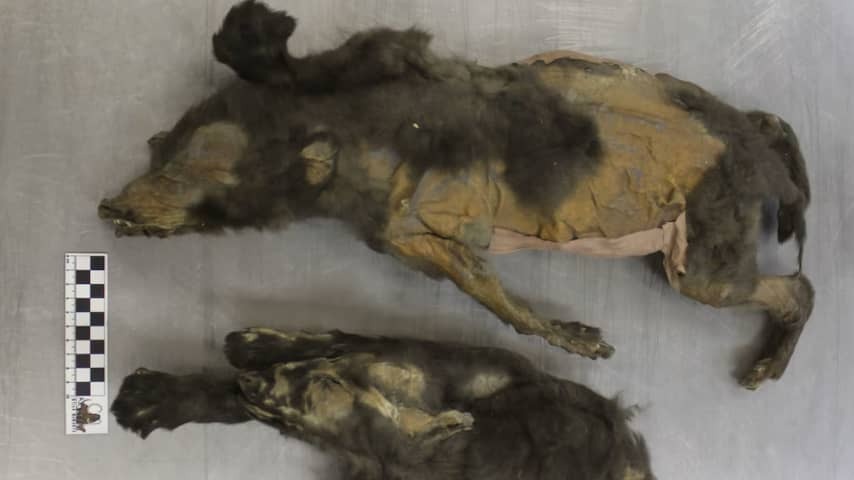
Two mummified Ice Age puppies turn out to be wolf cubs, not dogs that lived with humans. New research into their intestinal contents shows that these wolves were very similar to modern wolves.
The wolf cubs are well preserved. Their skin and fur are still visible after more than 14,000 years. The Tumat puppies, as they are called, had traces of woolly rhino meat and feathers from a small bird in their stomachs.
Previously, it was thought that they were domesticated dogs that lived with people who slaughtered mammoths. But new research with genetic data from the intestinal contents and bone and tooth characteristics provides no evidence for this interaction with humans.
Like modern wolves, the pups ate both meat and plants. Although a woolly rhino would be quite large prey for wolves to hunt, a piece of woolly rhino skin in the stomach of a pup proves the animal’s diet. The rhino skin had a blonde coat, suggesting a young rhino. Adult woolly rhinos presumably had a darker coat. A pack of adult wolves hunted the calf and brought it back to the den to feed the young, the scientists think. Wolves may have been larger than the modern species at that time.
The stomach contents were only partially digested, suggesting that the pups were resting in their den and died shortly after their last meal. The wolf sisters were only a few months old and presumably died when their den collapsed. They may have had more siblings lying elsewhere under the permafrost.
The research is a small step forward in answering the question of how humans and wolves interacted. That question remains difficult to answer because no written sources or cave paintings about them have been found from the Ice Age.